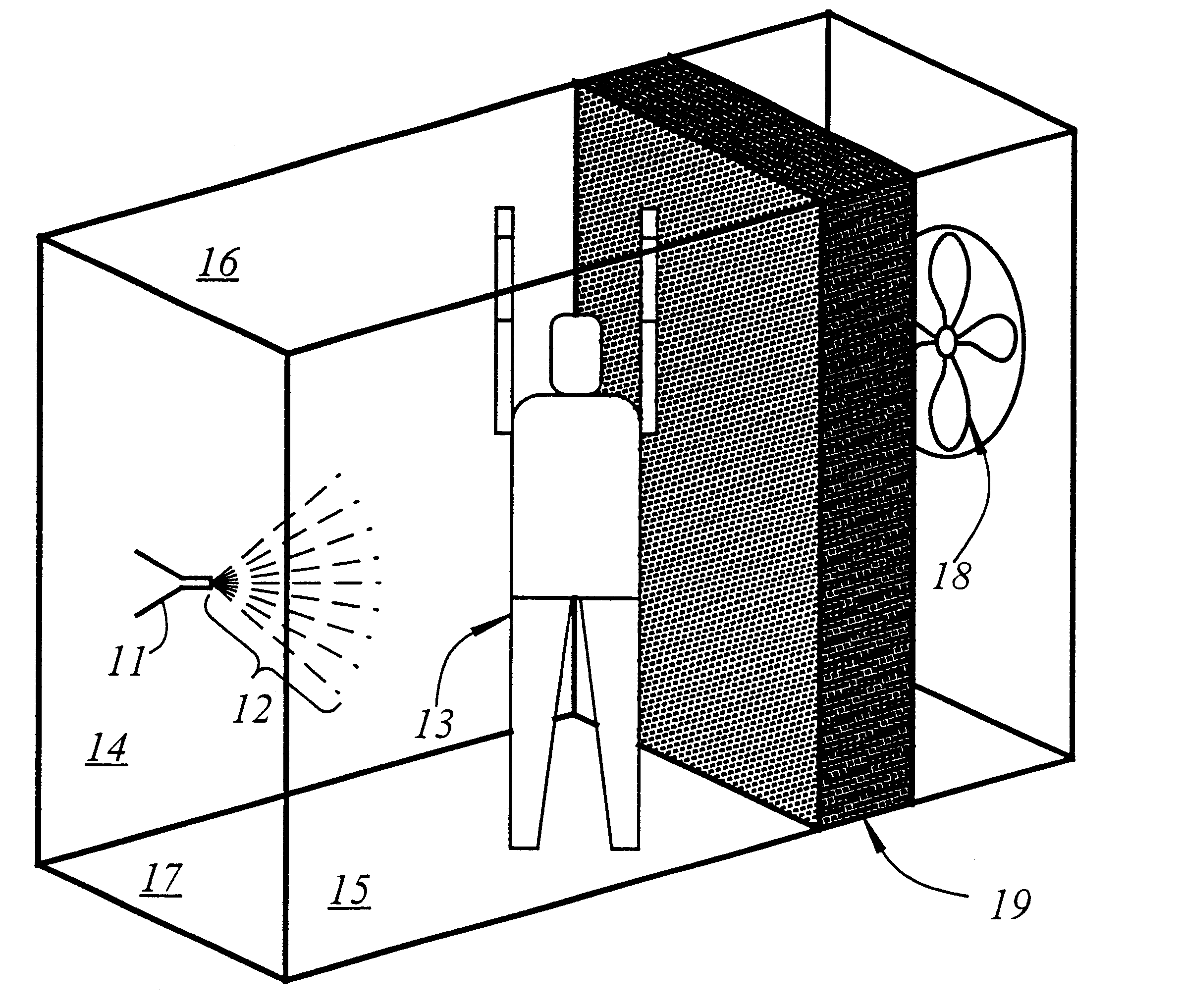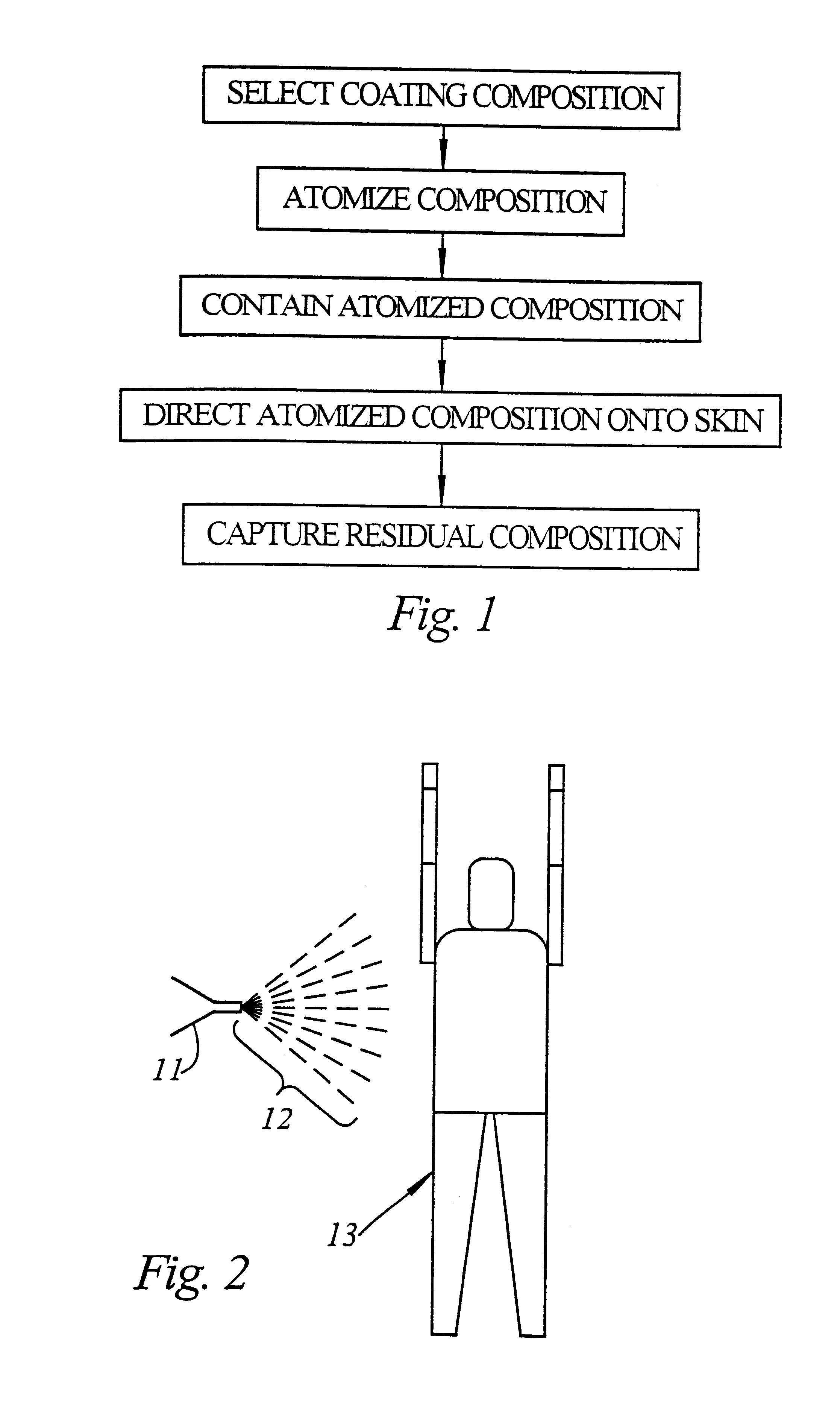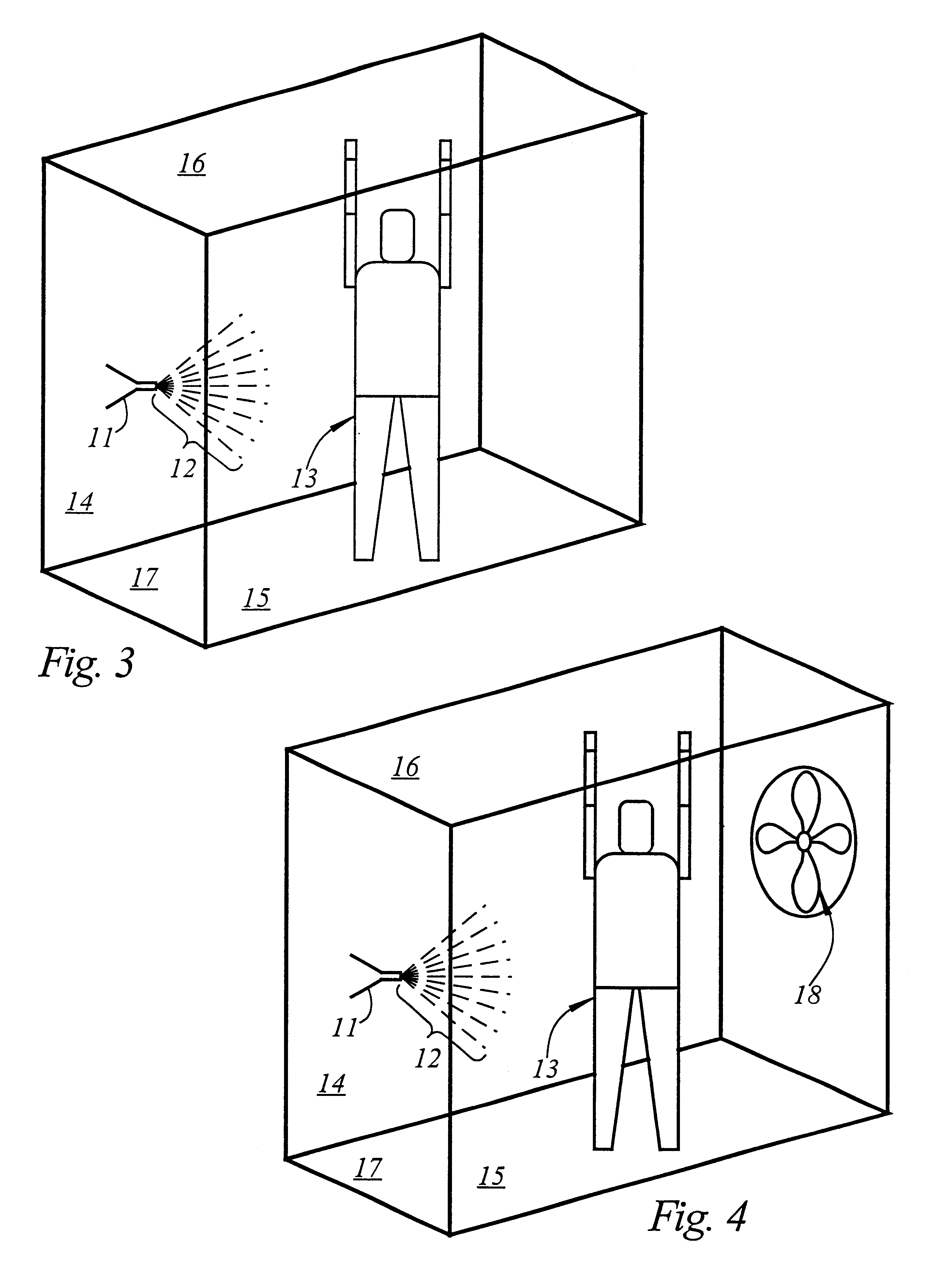Automated system for coating the human body: virtual motion
a technology of automatic coating and human body, applied in the direction of packaging foodstuffs, packaging goods, impression caps, etc., can solve the problems of not being able to uniformly coat the human body with fluids using manual application techniques, and never been a successful way of automatic coating the human body,
- Summary
- Abstract
- Description
- Claims
- Application Information
AI Technical Summary
Benefits of technology
Problems solved by technology
Method used
Image
Examples
example 1
[0329]A twenty year old female of type III skin tanned by this process. She first applied a heart shaped sticker on her right arm. She covered her hair with a nylon mesh hair net and applied barrier cream over the palms of her hands. She tanned in the coating chamber. The subject above was coated for 7 seconds. About 300 grams of solution was applied during such time. There was a subsequent 7 second period in which the mist was circulated in the booth. The residual mist was removed from the booth and the subject dried for about 45 seconds. The subject then removed any excess lotion with a towel. The final result was that the subject was 1 to 2 shades darker after tanning. This difference was especially apparent when comparing the area under the sticker with the area with no sticker. The initial color was mainly from the bronzer, and is a deep brown color. Color was much more intense the next day, when the color was at least two shades darker than before tanning. After the subject sh...
example 2
[0330]A forty seven year old male with type II skin tanned by this process. He first applied a heart shaped sticker on his right arm. He covered his hair with a nylon mesh hair net and applied barrier cream over the palms of his hands and the bottoms of his feet. He tanned in the coating chamber. The subject above was coated for 7 seconds. About 300 grams of solution was applied during time. There was a subsequent 7 second period in which the mist was circulated in the booth. The residual mist was removed from the booth and the subject dried for about 45 seconds. The subject then removed any excess lotion with a towel. The final result was that the subject was about 1 shade darker after tanning. This difference was especially apparent when comparing the area under the sticker with the area with no sticker. The initial color was mainly from the bronzer, and is a deep brown color. Color was much more intense the next day, when the color was one to two shades darker than before tanning...
example 3
[0331]A 24 year old female with type II skin tanned as described in examples 1 and 2 for five consecutive days. The results were a highly uniform, very dark tan. Her skin color was about 3 shades darker by the end of the week. The color was golden brown. The color remained 2 to 3 shades darker for about 4 days, and some color (about 1 shade) was observed after 7 days.
Discoveries
[0332]Very Fast Drying:
[0333]Traditional sunless tanning products require 20 minutes or more to dry. The sunless tanning composition of the present invention drys within a minute after use.
[0334]Less Transfer to Clothing Than Expected:
[0335]Traditional sunless tanning products do not contain bronzers because bronzers transfer to clothing and other fabrics. The present invention exhibits almost no such transfer.
[0336]Tan Hue Less Orange Than Expected:
[0337]The combination of bronzers, tan enhancers, and a super application process produces a long lasting, golden brown color.
[0338]Hair is not Turned Orange:
[033...
PUM
| Property | Measurement | Unit |
|---|---|---|
| viscosities | aaaaa | aaaaa |
| pH | aaaaa | aaaaa |
| flow rate | aaaaa | aaaaa |
Abstract
Description
Claims
Application Information
 Login to View More
Login to View More - R&D
- Intellectual Property
- Life Sciences
- Materials
- Tech Scout
- Unparalleled Data Quality
- Higher Quality Content
- 60% Fewer Hallucinations
Browse by: Latest US Patents, China's latest patents, Technical Efficacy Thesaurus, Application Domain, Technology Topic, Popular Technical Reports.
© 2025 PatSnap. All rights reserved.Legal|Privacy policy|Modern Slavery Act Transparency Statement|Sitemap|About US| Contact US: help@patsnap.com



